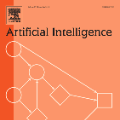Large, transformer-based pretrained language models like BERT, GPT, and T5 have demonstrated a deep understanding of contextual semantics and language syntax. Their success has enabled significant advances in conversational AI, including the development of open-dialogue systems capable of coherent, salient conversations which can answer questions, chat casually, and complete tasks. However, state-of-the-art models still struggle with tasks that involve higher levels of reasoning - including commonsense reasoning that humans find trivial. This paper presents a survey of recent conversational AI research focused on commonsense reasoning. The paper lists relevant training datasets and describes the primary approaches to include commonsense in conversational AI. The paper also discusses benchmarks used for evaluating commonsense in conversational AI problems. Finally, the paper presents preliminary observations of the limited commonsense capabilities of two state-of-the-art open dialogue models, BlenderBot3 and LaMDA, and its negative effect on natural interactions. These observations further motivate research on commonsense reasoning in conversational AI.
翻译:大型、基于变压器的预先培训语言模型,如BERT、GPT和T5等,展示了对背景语义和语言语法的深刻理解。 其成功使得对话性人工智能取得了显著进步,包括开发了能够一致、突出对话的开放对话系统,能够回答问题、闲聊和完成任务。然而,最先进的模型仍然在与涉及更高层次推理的工作,包括人类认为微不足道的常识推理等任务纠缠不休。本文件介绍了最近谈话性人工智能研究的调查,重点是常识推理。文件列出了相关的培训数据集,并介绍了将常识纳入谈话性人工智能的主要方法。文件还讨论了用于评价对话性人工智能问题中常识的基准。最后,文件介绍了对两种尖端公开对话模式(BlenderBot3和LAMDA)有限常识性能力及其对自然互动的负面影响的初步意见。这些观察进一步激励了对谈话性人工智能推理的研究。



